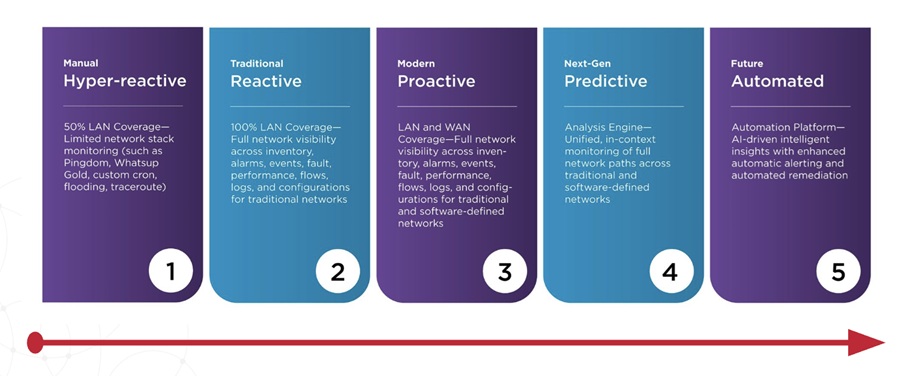Enterprise cloud spending will grow rapidly over the next year, and yet 35 percent of cloud spend is wasted, according to the RightScale 2018 State of the Cloud Survey.
“As a result, optimizing clouds costs is the top initiative for cloud users in 2018,” said Michael Crandell, CEO of RightScale. “Multi-cloud continues to be the preferred strategy for enterprises, with companies reporting that they use nearly five different clouds on average. With this multi-cloud approach, Azure is now nipping at AWS’ heels and, in fact, is in a dead heat with AWS among enterprises that are just beginning their cloud adoption.”
Key highlights from the RightScale 2018 State of the Cloud Report include:
■ Average enterprise cloud spending increases: For enterprises (companies with more than 1,000 employees), 26 percent say they spend more than $6 million a year in the public cloud. Another 26 percent say they spend between $1.2 million and $6 million a year.
■ Enterprises plan to grow public cloud spend: 20 percent of enterprises (companies with more than 1,000 employees) plan to more than double public cloud spend. An additional 17 percent plan to increase cloud spend 50 to 100 percent. Overall, 71 percent of enterprises will grow public cloud spend more than 20 percent.
■ Optimizing cloud costs is top initiative: Optimizing cloud costs is the top initiative again for the second year in a row for all cloud users (58 percent), which is an increase over 2017 (53 percent). The second priority is moving more workloads to the cloud (51%).
■ Cloud users leverage multiple clouds: Respondents are already running applications in 3.1 clouds and experimenting with 1.7 more for a total of 4.8 clouds used.
■ Enterprises create cloud “centers of excellence” to focus on cloud governance: 57 percent of enterprises already have a central cloud team or center of excellence with another 24 percent planning one. These central teams are focusing on planning which applications to move to cloud (69 percent), optimizing costs (64 percent), and setting cloud policies (60 percent).
■ Cloud architects are on the rise: We see a continued increase in cloud architects (and a slight decline in the number of IT architects). In 2018, 61 percent of architects say they are cloud architects, an increase from 56 percent in 2017. The percentage of architects identifying as IT architects has decreased to 31 percent in 2018 from 35 percent in 2017.
■ Top cloud challenges in 2018 are security and spend: Security is a challenge for 77 percent of respondents, with 29 percent seeing it as a significant challenge. Managing cloud spend is a challenge for 76 percent of respondents, while a smaller 21 percent see it as a significant challenge. Security is the largest issue among cloud beginners, while cost becomes a bigger challenge for intermediate and advanced users.
■ Public cloud adoption is up: Adoption of public cloud grew for all cloud providers. Across all users, AWS increased adoption from 57 percent in 2017 to 64 percent in 2018; Azure increased from 34 to 45 percent; Google Cloud increased from 15 to 18 percent; IBM Cloud increased from 8 to 10 percent; VMware Cloud on AWS came right out of the gate strongly with 8 percent adoption; Oracle Cloud increased from 3 to 6 percent; and Alibaba Cloud showed 2 percent adoption in its first year being included in the survey.
■ Azure closes ground on AWS, especially in the enterprise: Among enterprises, Azure grew enterprise adoption strongly to 58 percent, gaining ground on AWS at 68 percent. Among enterprises just beginning their cloud journey, Azure is used by 49 percent while AWS is at 47 percent. Azure also saw strong growth in the footprint of virtual machines used by its customers: 44 percent of Azure users have more than 50 VMs (up from 32 percent in 2017), while 59 percent of AWS users have more than 50 VMs (up from 51 percent in 2017).
■ Extended public cloud services grow (IoT, machine learning, container-as-a-service, and more): We look at the percentages of companies using extended cloud services such as relational database-as-a-service (DBaaS) (44 percent), container-as-a-service (19 percent), NoSQL DBaaS (28 percent), machine learning (12 percent), IoT Services (6 percent), and many more. The fastest-growing cloud services year over year are serverless (up 75 percent), container-as-a-service (up 36 percent), and SQL DBaaS (up 26 percent).
■ Private cloud adoption grows across the board: Overall, VMware vSphere continues to lead with 50 percent adoption, up significantly from last year (42 percent). OpenStack (24 percent), VMware vCloud Director (24 percent), Microsoft System Center (23 percent), and bare metal (22 percent) were all neck and neck.
■ Docker, Kubernetes, and cloud container services all grow: Overall Docker adoption increased to 49 percent from 35 percent last year (a growth rate of 40 percent). Kubernetes grew even faster, almost doubling to reach 27 percent adoption. AWS’ container service reached 44 percent adoption (a growth rate of 26 percent from 2017), while Azure’s reached 20 percent and Google’s reached 14 percent.
Survey Methodology: RightScale conducted its annual State of the Cloud Survey in January 2018. The survey questioned technical professionals across a broad cross-section of organizations about their adoption of cloud computing. The 997 respondents range from technical executives to managers and practitioners and represent organizations of varying sizes across many industries. Their answers provide a comprehensive perspective on the state of the cloud today. The margin of error is 3.08 percent.


